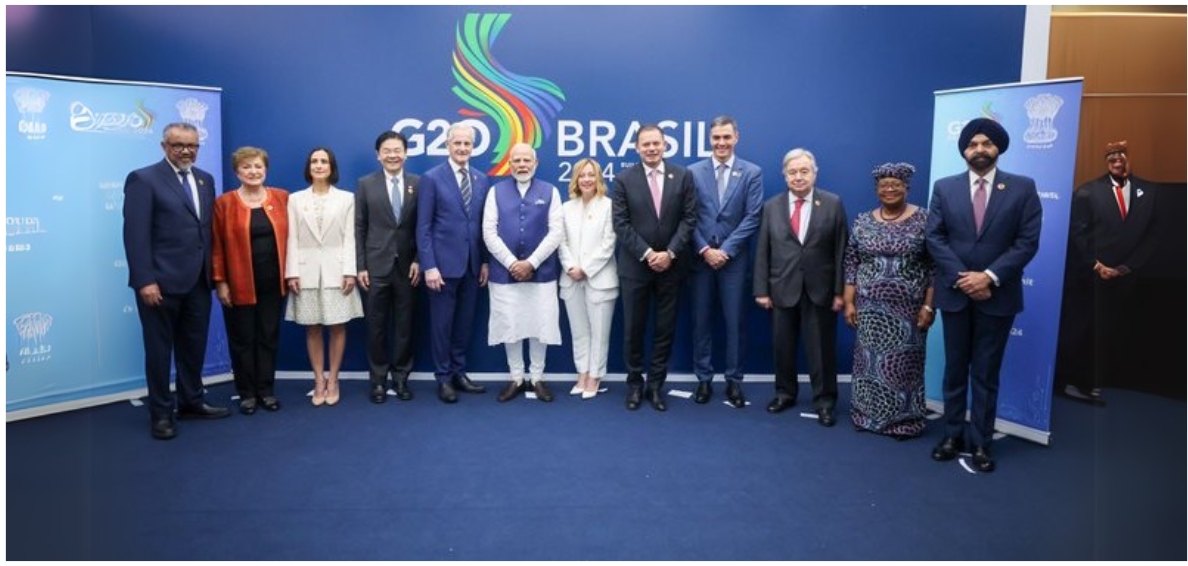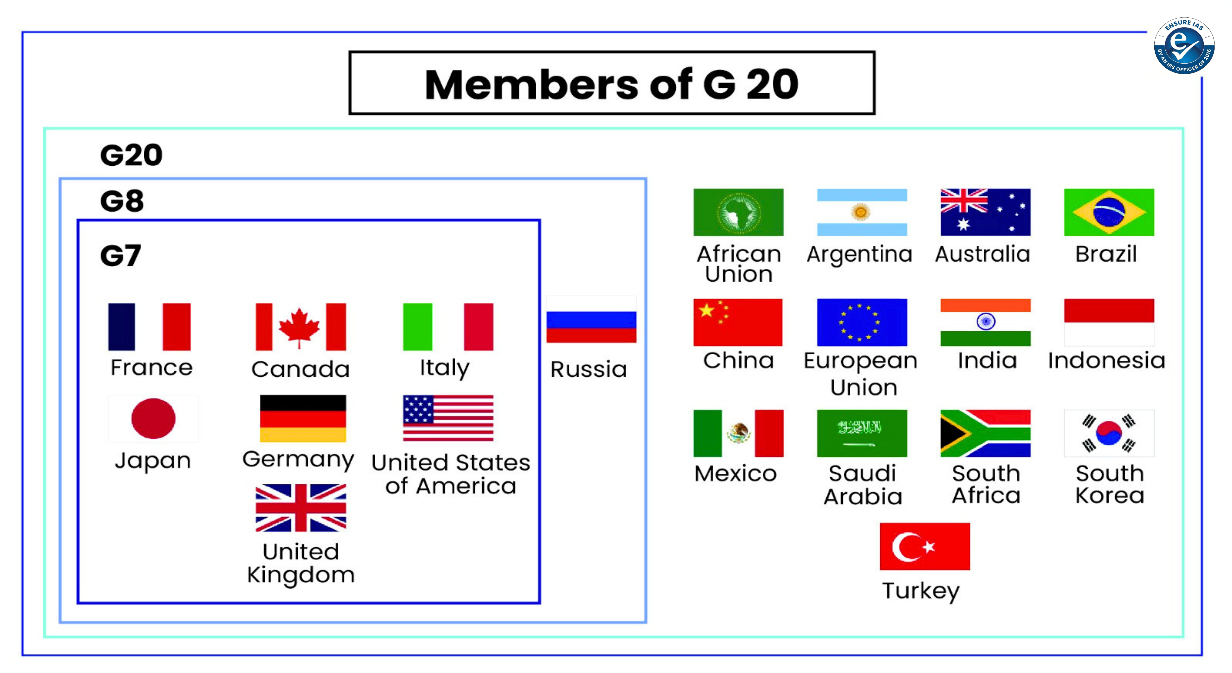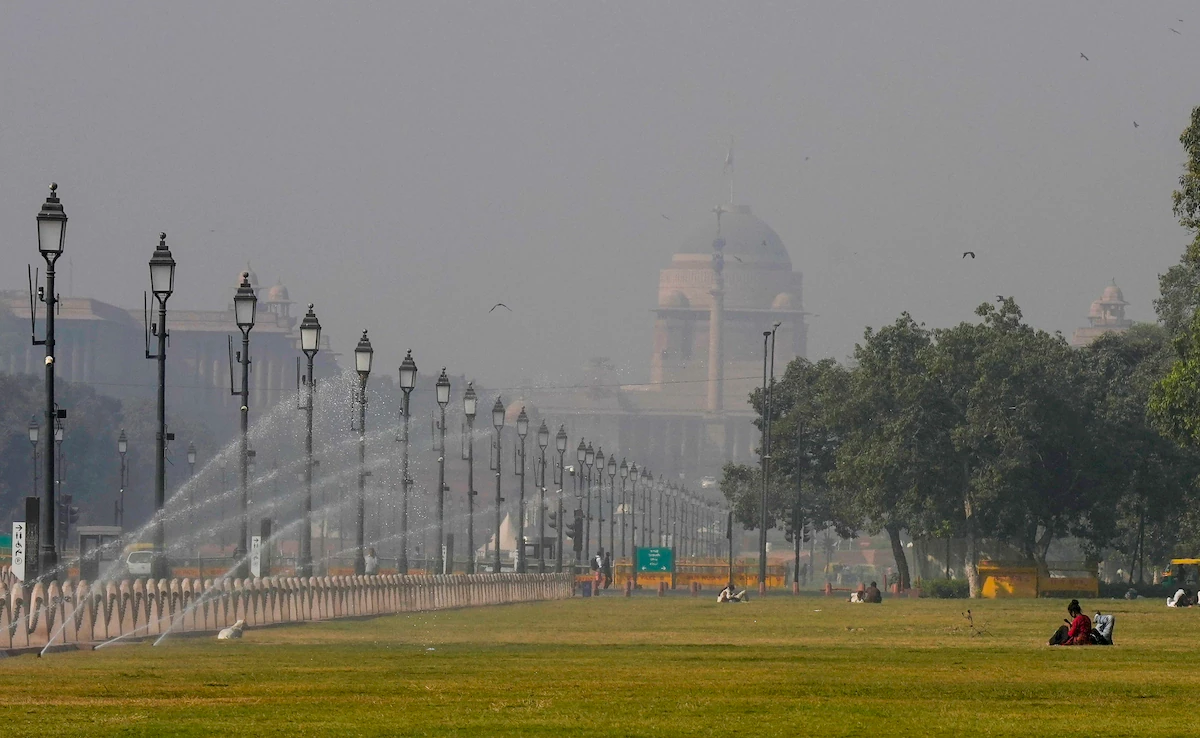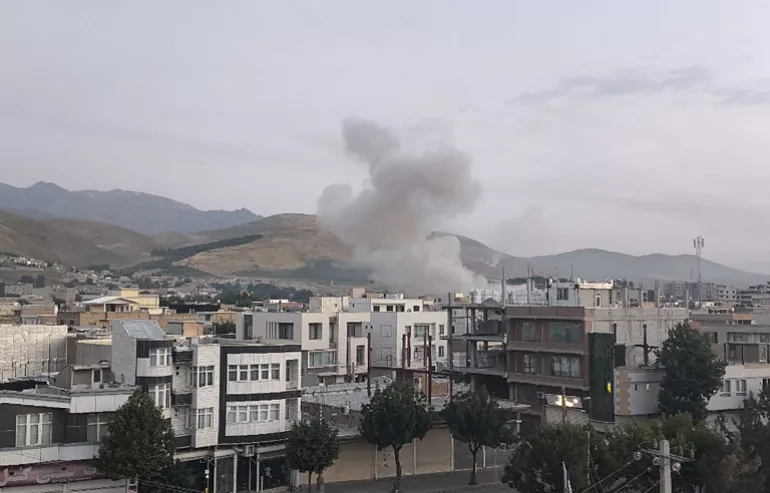- Courses
- GS Full Course 1 Year
- GS Full Course 2 Year
- GS Full Course 3 Year
- GS Full Course Till Selection
- Answer Alpha: Mains 2025 Mentorship
- MEP (Mains Enrichment Programme) Data, Facts
- Essay Target – 150+ Marks
- Online Program
- GS Recorded Course
- Polity
- Geography
- Economy
- Ancient, Medieval and Art & Culture AMAC
- Modern India, Post Independence & World History
- Environment
- Governance
- Science & Technology
- International Relations and Internal Security
- Disaster Management
- Ethics
- Current Affairs
- Indian Society and Social Issue
- NCERT- Science and Technology
- NCERT - Geography
- NCERT - Ancient History
- NCERT- World History
- CSAT
- 5 LAYERED ARJUNA Mentorship
- Public Administration Optional
- ABOUT US
- OUR TOPPERS
- TEST SERIES
- FREE STUDY MATERIAL
- VIDEOS
- CONTACT US
19th G20 Summit in Brazil
19th G20 Summit in Brazil
09-01-2025

- In November 2024, the 19th Heads of State and Government Summit of the Group of 20 (G20 Summit) held in Rio de Janeiro, Brazil.
- The 2024 Summit’s theme is ‘Building a Just World and a Sustainable Planet’.
- It was the first G20 summit to be hosted in Brazil, the 3rd Global South host after Indonesia (2022) and India (2023).
- Additionally, it marked the first full G20 summit with the African Union (AU) as a member, following its inclusion during the previous summit in 2023, which held in New Delhi.
- The next G20 summit is scheduled to be hosted in Johannesburg, South Africa, in 2025.
- Notably, Brazil, India & South Africa together forms the troika (previous, current, and upcoming) of G20. These countries representing the Global South and are also part of IBSA and BRICS grouping.

All About G20
|
What are Major Outcomes of G20 Summit 2024?
- Climate Finance Commitment: The G20 recognized the urgent need to scale up climate finance “from billions to trillions”, but no concrete plan was established for the sources of this funding.
- Leaders supported COP29 in Azerbaijan and called for enhanced financing to help developing nations adapt to climate change, though consensus on the financial mechanisms remained elusive.
- Taxation of the Billionaires: A major achievement was the endorsement of measures to tax ultra-high-net-worth individuals.
- Brazil led the charge, with discussions about a global tax on the super-rich, though concerns about national sovereignty and tax principles were not fully resolved.
- Global Hunger and Poverty Alliance: The Task Force for a Global Alliance Against Hunger and Poverty, proposed by Brazil's G20 presidency, aims to create a Global Alliance to mobilize resources and knowledge for effective policies and social technologies to reduce hunger and poverty.
- The initiative was launched and gained support from 82 countries and aims to help 500 million people by 2030, marking a significant success for the G20 agenda, as it focuses on concrete social actions.
- Financial Reform and MDB Cooperation: The G20 reaffirmed the need to reform Multilateral Development Banks (MDBs) to better address global challenges, including climate change and poverty.
- Leaders agreed on strengthening cooperation within MDBs to ensure resources are effectively mobilized for high-impact projects.
- Energy Transition and Fossil Fuel Subsidies: The summit highlighted the need for continued investment in renewable energy and clean technologies but did not reaffirm the previous COP28 commitment to phase out fossil fuel subsidies.
- Emphasis was placed on reducing food loss and waste as part of broader climate action.
- Global Governance and Social Inclusion: The G20 called for reforms in global governance to address global inequalities.
- The G20 Social Summit culminated with declaration, emphasizing combating hunger, poverty, and inequality, advocating for sustainability, climate change action, just transition, and global governance reform, while highlighting tax justice and inclusive decision-making.
- Inclusion of Sustainable Development Goal 18 (SDG 18): A new SDG, focusing on ethnic-racial equality, was officially included as a key element among the G20 priorities.
- The goal addresses systemic discrimination and promotes policies for the social, economic, and political inclusion of marginalized ethnic groups. It aligns with the broader agenda of sustainable and equitable global development.
The G20's Dilemma: Inequity, Division, and Unrealized Reforms"
- Representational inequity: Reluctance to rename the forum as "G21" after the African Union's inclusion demonstrates persistent barriers to genuine global representation.
- Diplomatic Fragmentation:
- Key leaders' absences at the recent summit, like the Russian President and Saudi Crown Prince, highlight divisions within the G20.
- Also, Argentina's opposition to sustainable development and welfare spending underscores significant differences among members.
- Major economies like the US, Germany, and Argentina resist wealth tax and progressive taxation proposals, impeding efforts to reduce global disparities.
- Unrealized Goals in Governance Overhaul:
- Global institutional reforms: Calls for reforming global institutions like the UN Security Council and World Bank remain unaddressed, limiting the G20's impact on global governance.
- Climate Commitments: Despite coinciding with COP29, the summit failed to advance climate goals beyond previous declarations.
- Structural and Operational Weaknesses: G20 decisions are non-binding, reducing their enforceability. Also, it operates without a formal charter, limiting accountability and public scrutiny.
- Competition from Other Institutions: Growing influence of organizations like BRICS and the Shanghai Cooperation Organisation (SCO) poses challenges to a divided G20.
Strengthening Global Cooperation: Enhancing the Effectiveness of G20 Summits
- Permanent Secretariat: Establish a secretariat with research and policy capabilities to ensure policy continuity and strategic insights between summits.
- Empowering Middle-Income Members: Enable countries like Argentina, Brazil, India, and South Africa to take active diplomatic roles.
- Accountability Framework: Introduce mechanisms to track commitments, monitor implementation, and provide transparent annual performance reviews.
- Strategic Coordination with UN Agencies: Collaborate with organizations like WHO, UNEP, and UNDP to avoid to duplication of efforts and maximize public goods delivery.
- Addressing Global South Priorities: Advocate for equitable global governance, reducing G7 dominance (e.g., G7 represents 13% of the population but controls 59% of IMF and World Bank voting rights).
G20's Debt Service Suspension Initiative (DSSI)
|
Global Alliance Against Hunger and Poverty
About Alliance
The Need for the Alliance: Current Situation (Data and Projections)
What are India's Progress on Hunger and Poverty Alleviation?
|
Also Read |
|
UPSC Foundation Course |
|
| CSAT Foundation Course | |



